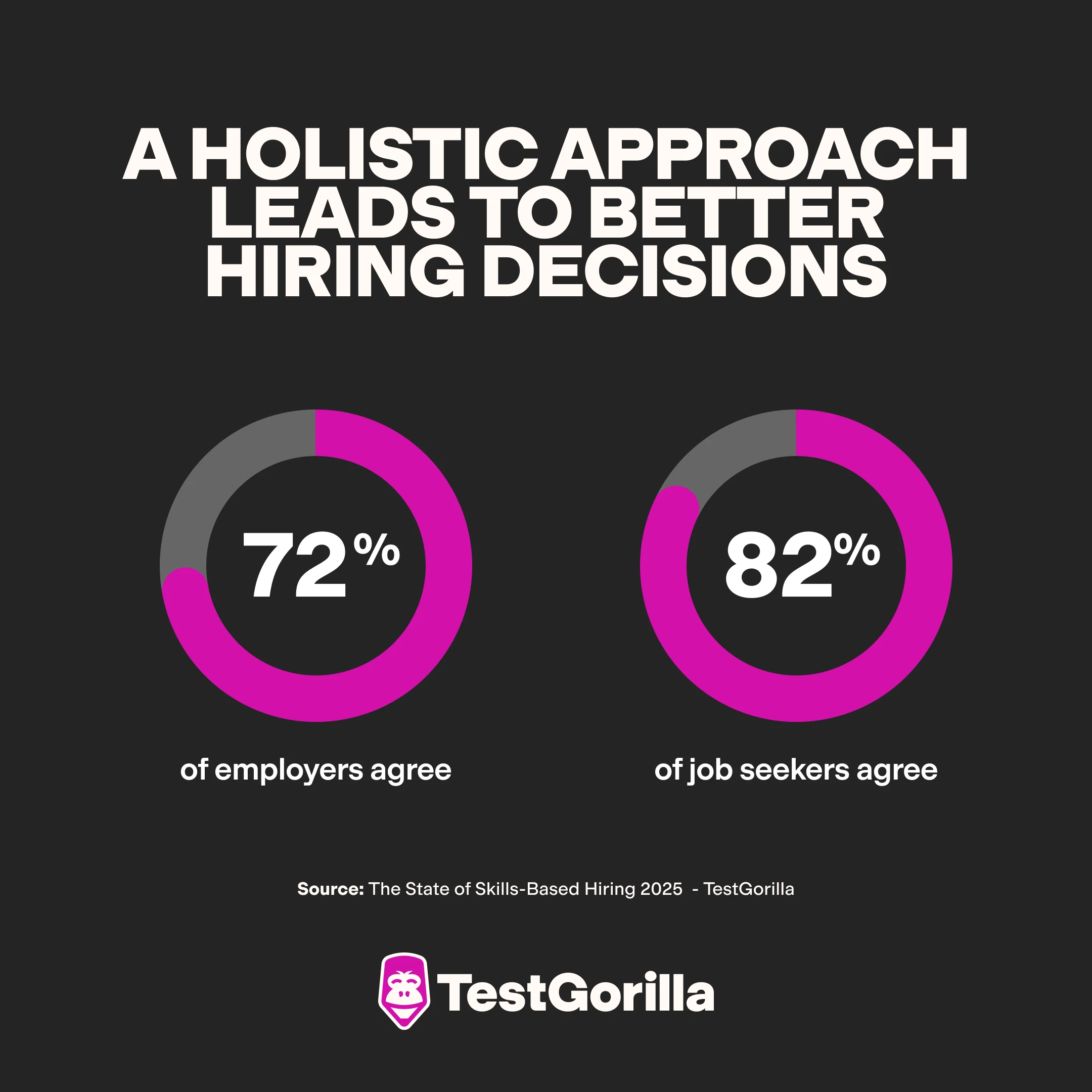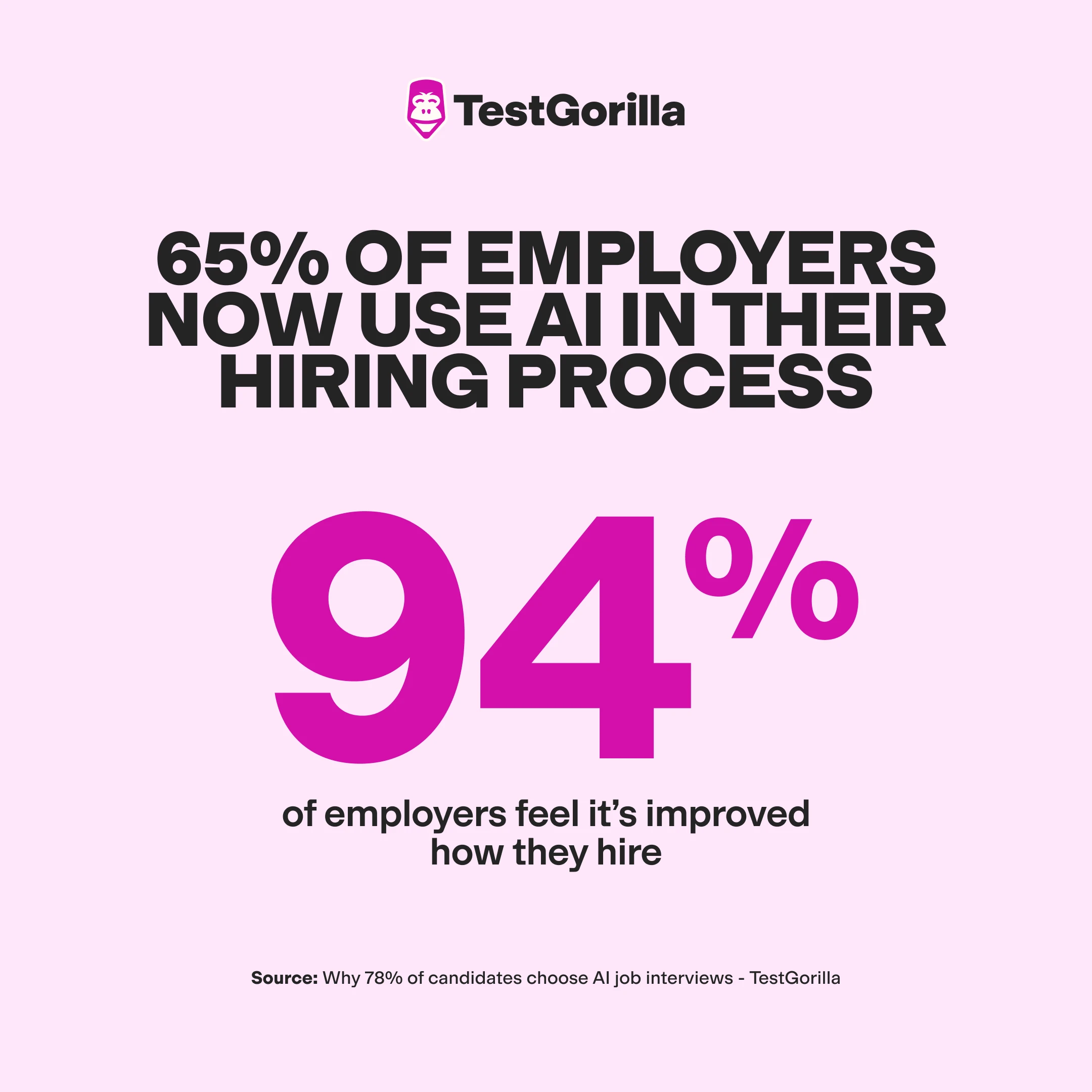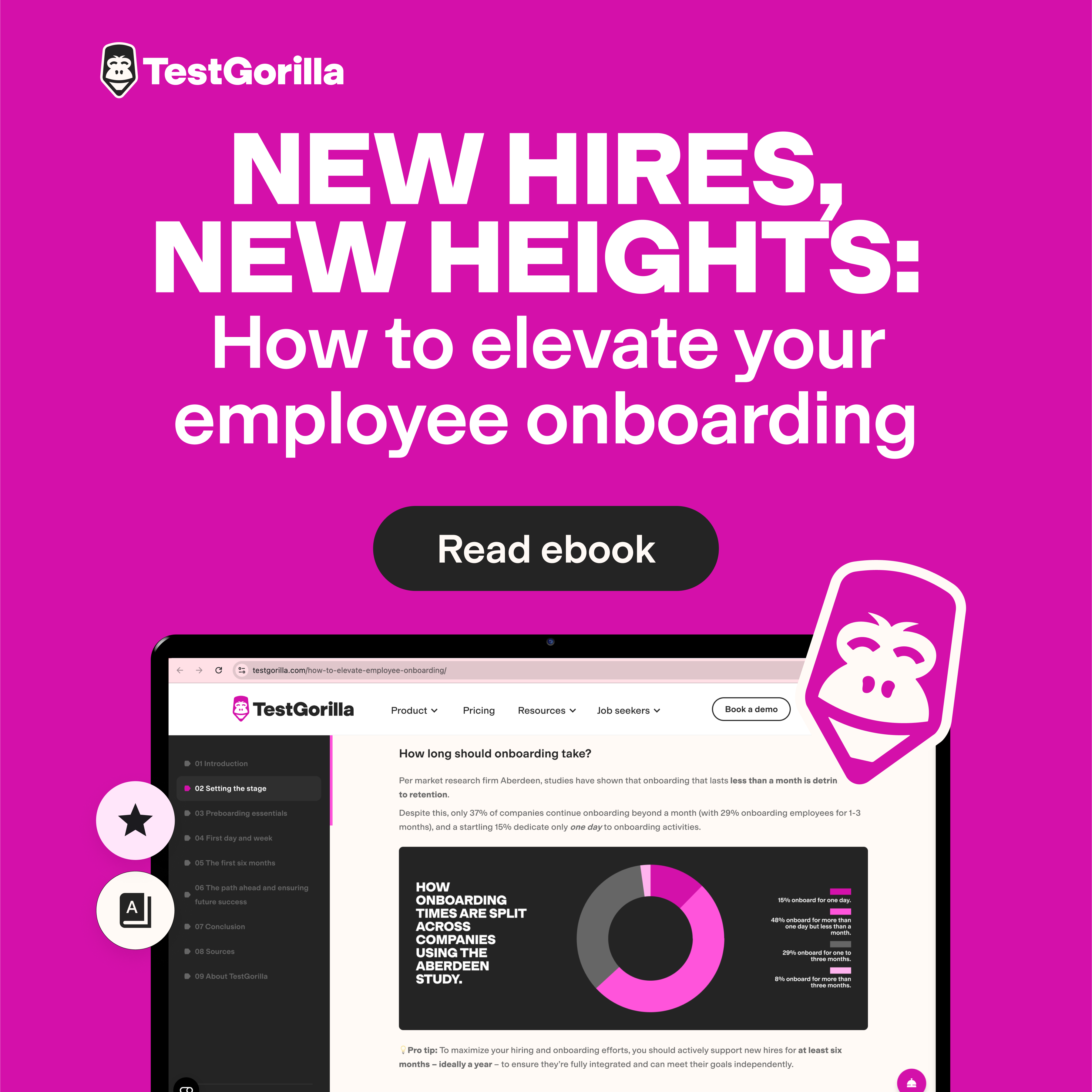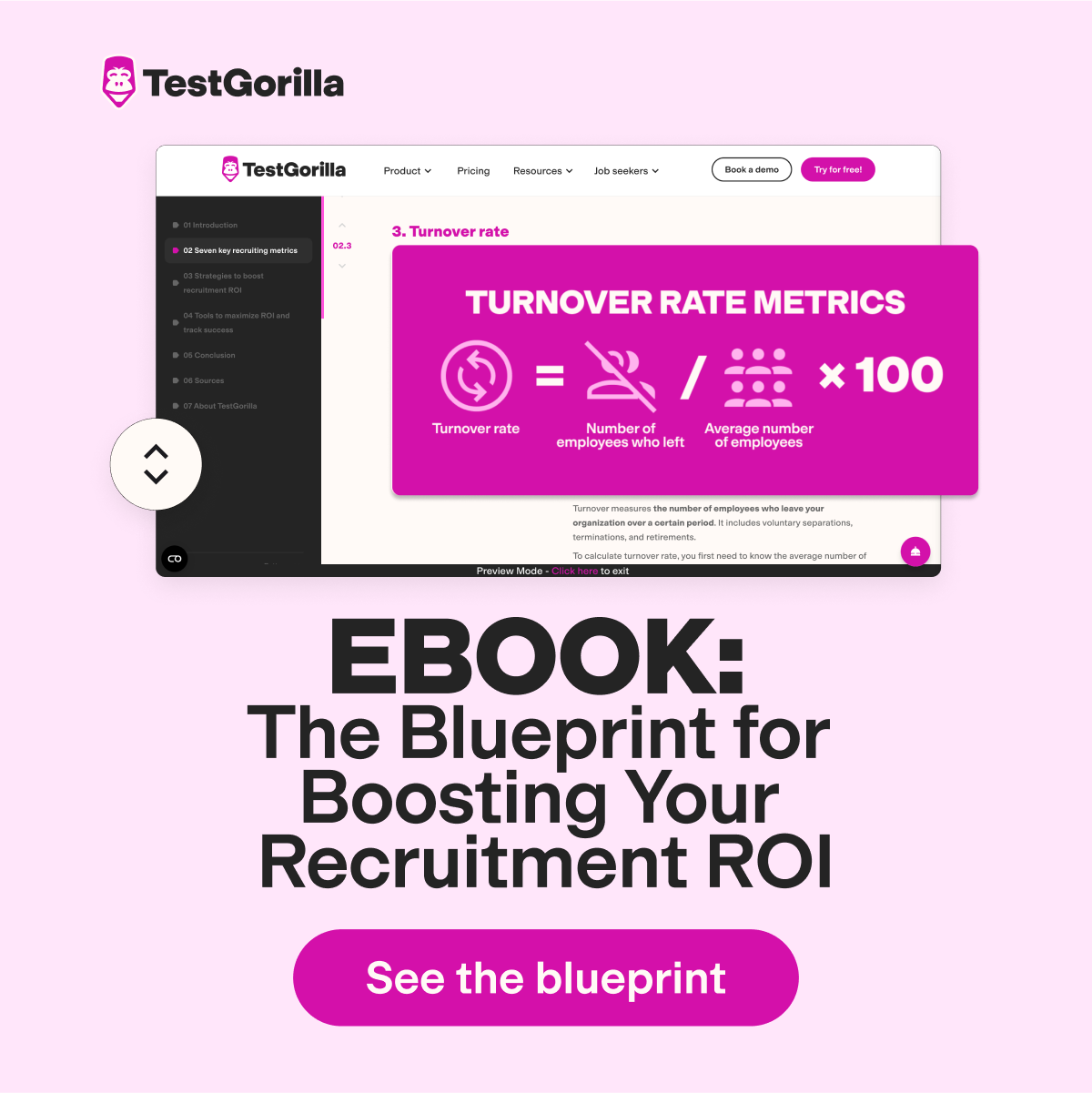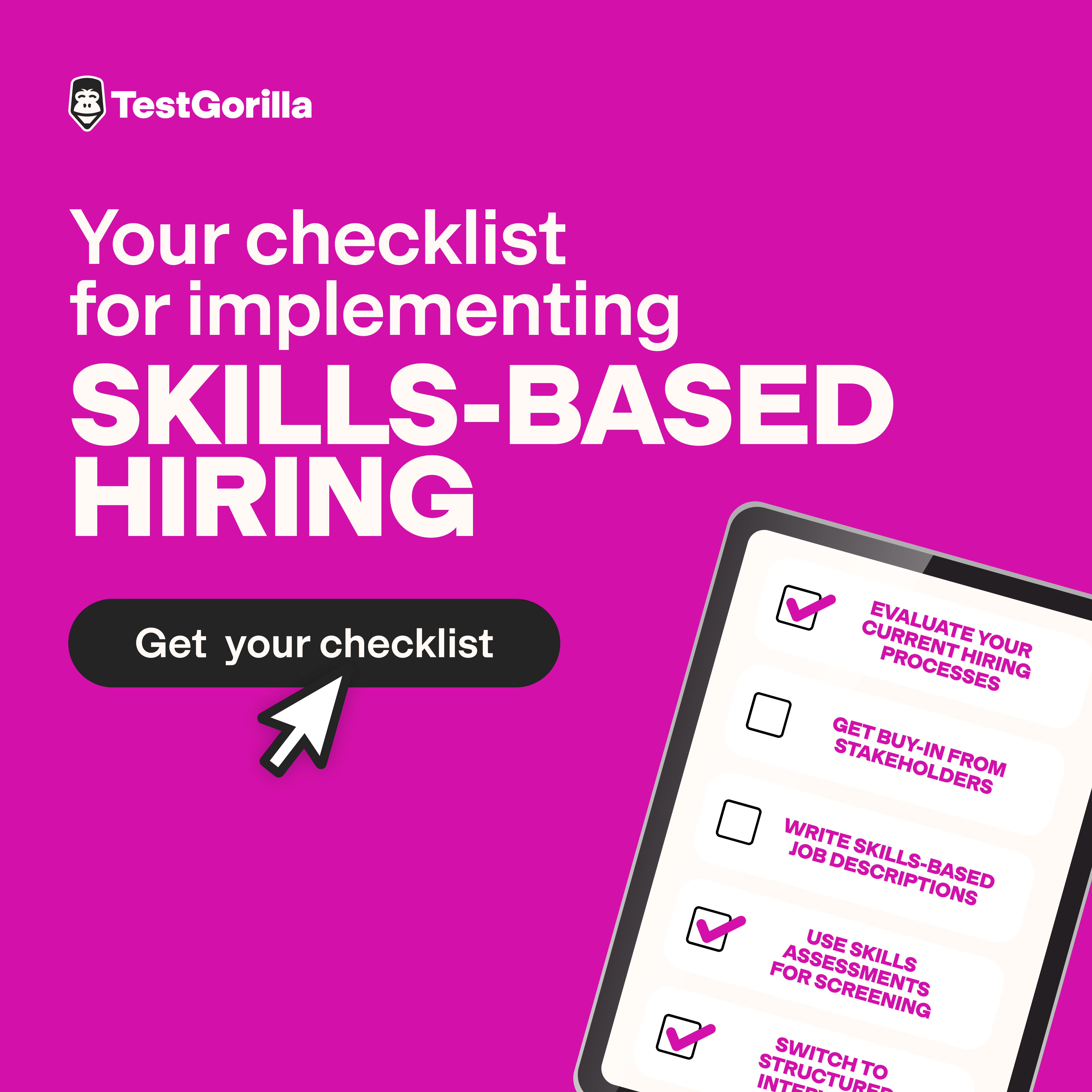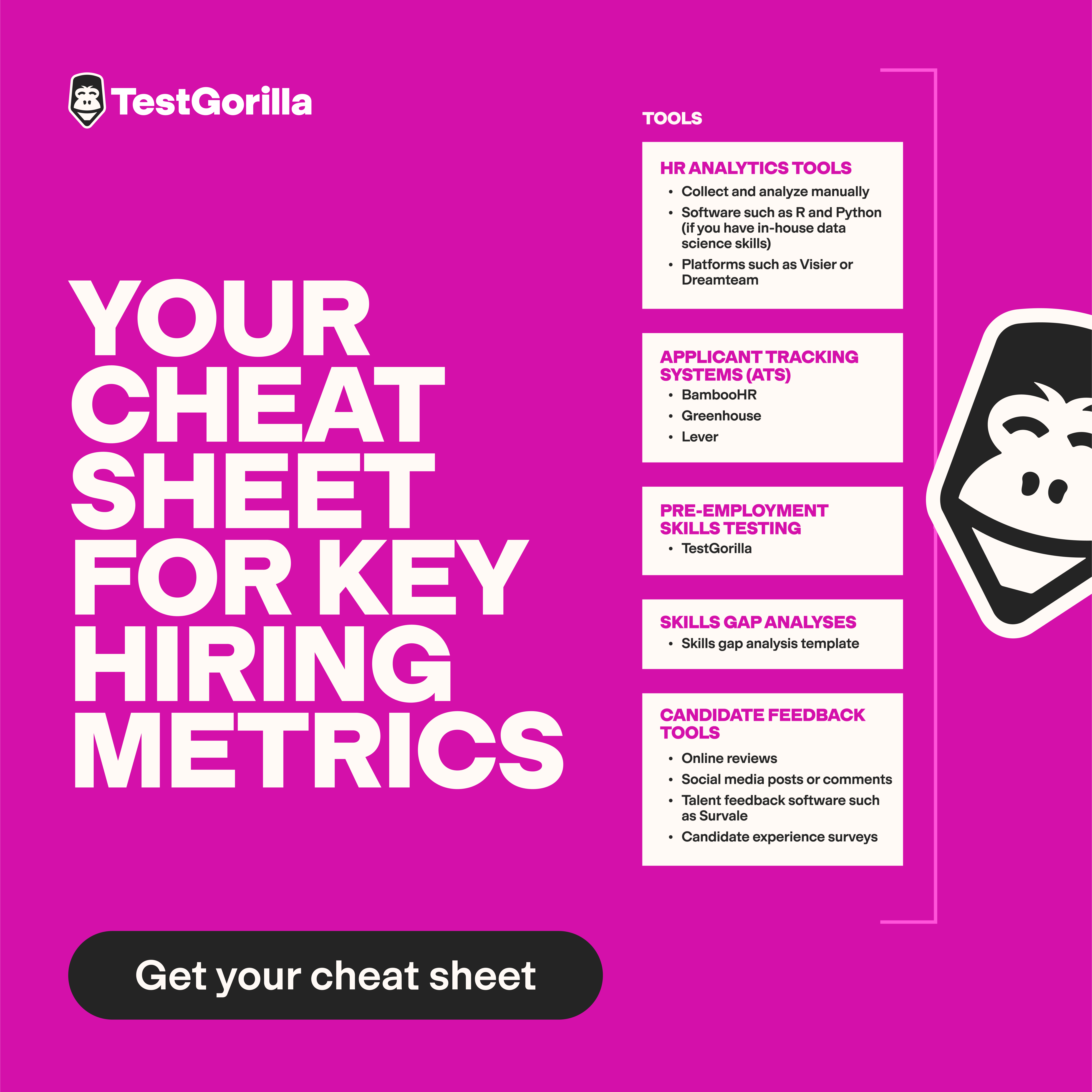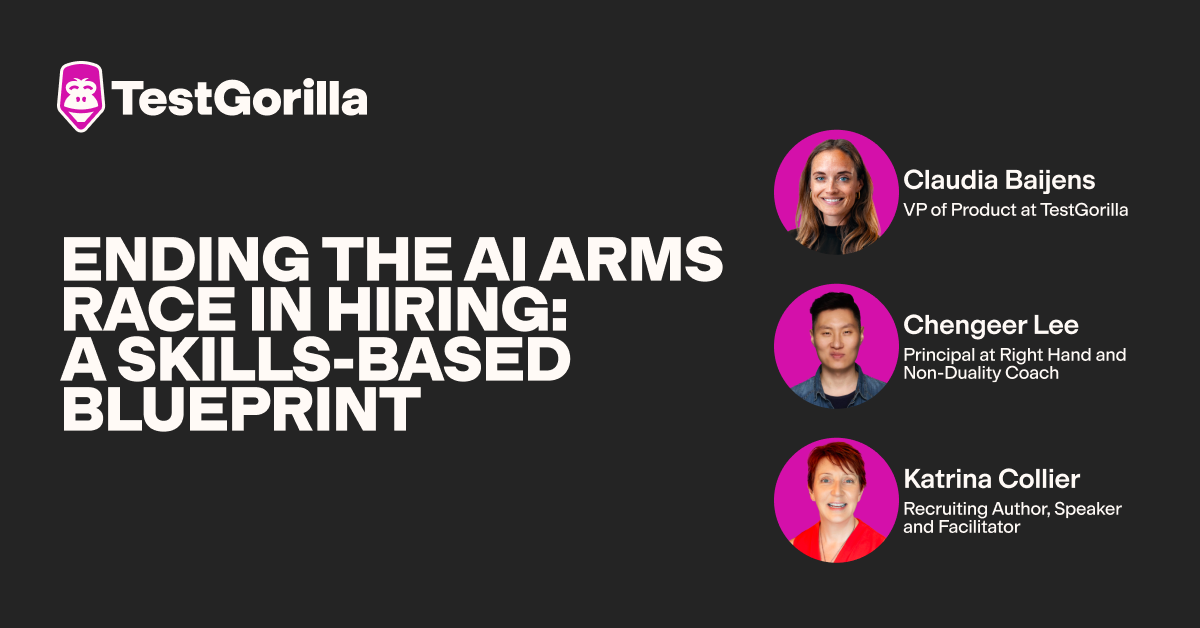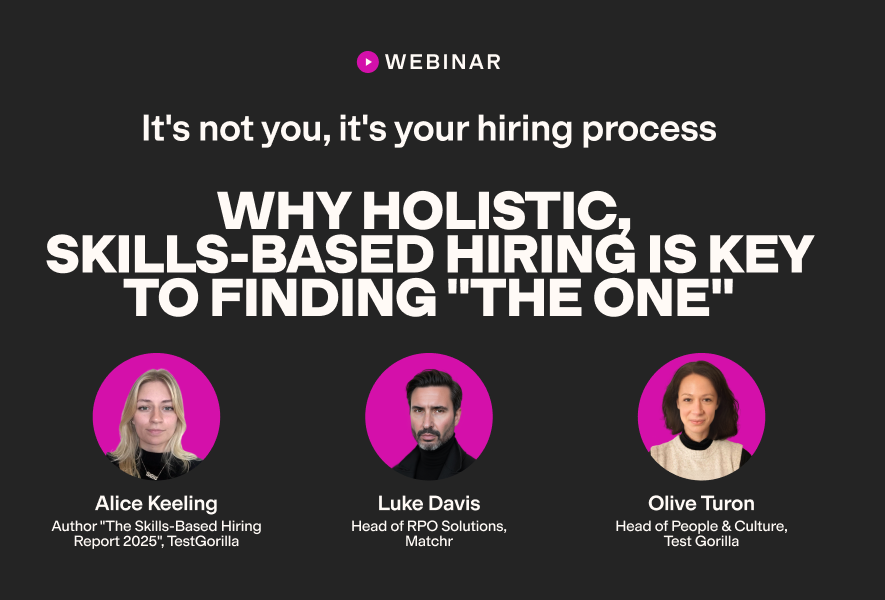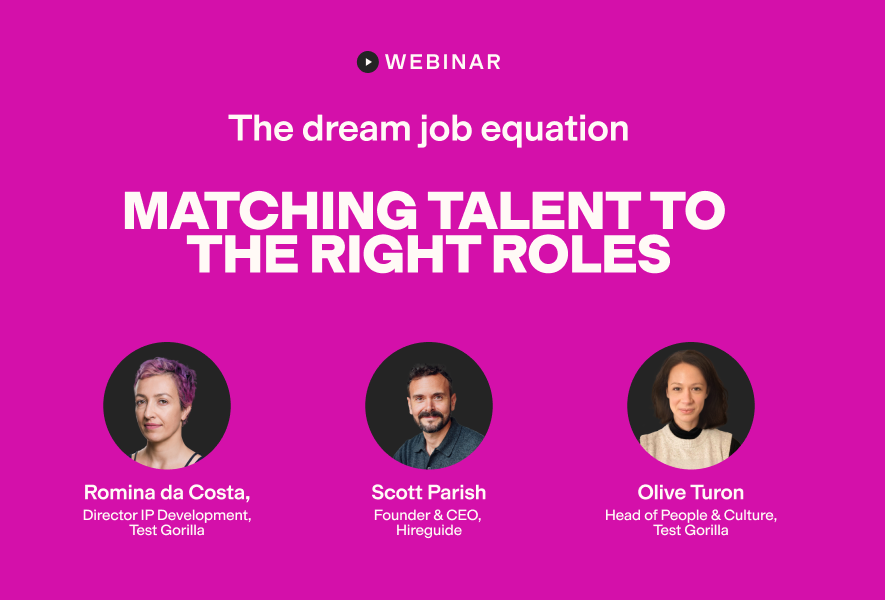Our 2025 State of Skills-Based Hiring Report discovered what seems to be a chasm: 70% of job seekers told us it’s hard to find a job, but 63% of employers told us that it’s hard to find great talent.
We believe strong talent acquisition strategies – emerging and overlooked ones – can fix this problem by helping you connect with the right job seekers (and vice versa).
Below, we explore what we believe are the best talent acquisition strategies – from talent sourcing to AI interviews.
Table of contents
- 1. If you don’t use skills-based assessments yet, use them now!
- 2. Take a holistic approach
- 3. Use a skills-based sourcing tool
- 4. Take advantage of AI interviews
- 5. Look beyond job boards and into communities
- 6. Develop your employer brand with employee-generated content
- 7. Phone your network
- 8. Communicate with candidates at every step
- 9. Proactively reduce biases in candidate screening with technology
- Use our top talent acquisition strategies to find talent – and let talent find you
- Contributors
1. If you don’t use skills-based assessments yet, use them now!
In 2024, 81% of employers used skills-based hiring – where hiring decisions are based primarily on candidates’ proven abilities (rather than on other factors like college degrees).
In 2025, we found that number has gone up to 85%. If you haven’t started using assessments, you’re behind the times…and you’ve been missing out on one of the greatest talent acquisition strategies.
Skills-based assessments (which are made up of tests that assess individual skills) are better at predicting a candidate’s job success than more traditional hiring metrics like resume screening – 71% of the employers we surveyed in 2025 say so.
For instance, TestGorilla’s skills-based assessments score every candidate against the same criteria, enabling you to compare each candidate fairly and efficiently. You can use these to screen all your applicants and build a shortlist faster, meaning you can interview and hire faster, too.
2. Take a holistic approach
As many as 82% of job seekers and 72% of employers now feel that considering a candidate’s whole self – from hard skills to soft skills to personality to culture add – improves outcomes and hiring decisions. Considering multiple factors in your hiring process is therefore a key step to acquiring the right talent.
For instance, with a platform like TestGorilla, you can build assessments with various tests that look at a range of candidate skills and traits – including their soft skills, cognitive abilities, language skills, and even personality traits.
This gives you a more well-rounded view of what a candidate could be like to work with and their suitability for the role, your team, and your business.
The best insights on HR and recruitment, delivered to your inbox.
Biweekly updates. No spam. Unsubscribe any time.
3. Use a skills-based sourcing tool
Seventy-seven percent of the professionals we recently surveyed said active sourcing – where you proactively identify and engage with potential candidates rather than waiting for them to apply – is either very important or essential to their talent acquisition strategy. That’s why we believe a good sourcing tool is a top talent acquisition strategy.
However, 46% of sourcing teams think their current tool is either “somewhat” or “not at all” effective. For talent sourcing to work, teams need a better option.
TestGorilla’s talent sourcing tool is one great option. Using it, you can connect with a global talent pool of more than 2 million skills-tested candidates. So instead of rifling through unqualified resumes, you can immediately find qualified candidates.
Our smart matching and AI-driven recommendations enable you to filter by salary, location, or skills, then connect with suitable candidates. You can choose to reach out directly, or conduct more skills assessments or AI video interviews.
4. Take advantage of AI interviews
Our 2025 State of Skills-Based Hiring Report found that 65% of employers now use AI in their hiring process, and 94% feel it’s improved how they hire.
AI interviews are one way to use AI in the hiring process. Research shows that 78% of candidates actually prefer AI interviews, so they’re a great strategy to use. Because AI interviews aren’t pre-scheduled like live interviews are, applicants can do them on their own time, greatly improving the candidate experience by making the process more convenient.
That convenience extends to you, too: AI interviews enable you to interview multiple candidates at once and don’t require too much effort.
So, how exactly do AI interviews work? They vary from platform to platform. TestGorilla offers two kinds.
One-way AI videos enable candidates to record video responses to a fixed set of questions. The AI then instantly scores them. These are great if you need to interview at scale, like for entry-level or high-volume roles. You can choose the questions and review results, override AI scores, or leave comments for your hiring team.
Conversational AI video interviews are perfect for more in-depth interviews, such as for leadership or sales roles. During the interview, a role-aware AI persona with a human appearance guides the structured conversation, simulating a live screening call. Every response gets a score.
→ Our AI video interviews have been tried, tested, and validated on over 21,000 candidates. Visit our AI video interviews page to learn more about why they’re great and how they’re scored.
5. Look beyond job boards and into communities
Your next hire probably won’t look for you on a job board. According to Michael Pedrotti, Co-Founder of Ghostcap:
“Developers don't use the job boards anymore – they are in Discords, forums and GitHub threads fixing things together. Filling in those spaces with valuable advice or assistance will attract better talent than generic advertisement. On my end, two of our best hires were brought in through working with live troubleshooting in a gaming community. There's no better way to show off your company than having a conversation with someone, and that is where authentic connections occur.”
While this quote is specific to developers, the same applies for other roles. For example, over the last couple of years, we’ve seen lots of Substacks, Slacks, and Subreddits for almost every industry or role. There are Subreddits for B2B sales, call center workers, and human resources to name a few.
To find a community for your industry, look in the places we’ve mentioned, ask your LinkedIn network, or ask AI or search engines.
These communities offer the perfect opportunity for you to answer customer or candidate questions (no matter if they’re related or unrelated to the brand) with your unique expert insights. This builds your brand visibility and trust and forges connections that could bring in great hires.
6. Develop your employer brand with employee-generated content
Whether you consciously build your employer brand or not, candidates can and will research it – 82% of job seekers research a brand before they apply for a role.
The online actions of your company’s employees can speak louder than any job description ever could, telling potential candidates everything they need to know about your culture. According to LinkedIn’s “Ultimate List of Employer Brand Statistics,” job seekers are about three times more likely to trust employees over official company statements when finding out what it’s like to work at a company.
That’s why employee-generated content (EGC) is such a powerful way of showing what your company is like, who works for you, and what your company values are. EGC can include employees’ posts about work life, company initiatives, and more on sites like LinkedIn.
To encourage employees to create content, you can nurture a workplace where people genuinely want to share their experiences without prompting because they’re excited about their work and feel valued. Simple, non-pressured requests (like “Would you consider sharing a photo from today’s event on Instagram?”) could also work. You could even offer incentives like merch, paid time off, or even financial bonuses for milestones like having a post go viral or achieving 1,000 LinkedIn followers.
Using an employee advocacy tool like Haiilo and EveryoneSocial, you can track employee-generated content and see who’s doing what and when. Many of these tools come with leaderboards, offering points for engagement such as reactions, comments, and posts. This can help you get employees with a competitive streak involved, as can setting goals or challenges.
You can then use high performers as examples to encourage other employees to participate, too.
The key to building your employer brand with EGC is consistency. The more content you – and your employees – publish showing what it’s like to work for you, the more people you’ll reach and the stronger the employer brand you’ll create.
7. Phone your network
Zeel Jadia, CEO of ReachifyAI, told us:
“Don't forget the value of phoning your network… I mean actually picking up the phone and calling 3-5 of your most trusted professionals that have worked with various teams across their career… More and more, this is being overlooked, but it is a great strategy because many top employees are not seeking new positions, but are still very interested in hearing out new opportunities from a trusted source.”
Phoning your network enables you to tap into warm leads who aren’t searching job boards but could still be interested in working with you.
All that said, our research found that only 58% of sourcing teams find referrals from networks to be extremely or very effective. So while this strategy can prove useful, it's best to use it in combination with other talent acquisition strategies.
8. Communicate with candidates at every step
Your candidate experience matters just as much as your customer experience.
If you don’t communicate with candidates during the hiring process, they could share their negative candidate experience with their network, creating a ripple effect where their network is deterred from applying for roles, too.
Simple things like offering a timeline for each stage of the process (e.g., “Expect to hear back from us within five days of the interview”) and providing feedback show that you value candidates’ time and presence. It also keeps them engaged as they go through the pipeline, meaning they don’t forget about you or the role they applied for.
This might sound like too much work. That’s why one of the best ways to effectively communicate with candidates is to use a platform that automates the communication for you.
For instance, when you invite candidates to fill in an assessment with TestGorilla, they get automatic reminders. You can send further manual reminders, plus share their results with them afterwards. For unsuccessful candidates, you can choose to send rejection emails individually or in bulk.
This kind of continued communication ensures applicants know what’s happening and what to expect, improving their experience, your brand, and your chances of acquiring the talented candidates you want.
9. Proactively reduce biases in candidate screening with technology
Diverse businesses experience 2.5x greater cash flow per employee than those that aren’t diverse.
Businesses wanting to build a diverse workforce and experience these benefits must start with the hiring process.
Unfortunately, our data shows that 42% of candidates experienced bias in the hiring process in 2025, up by 11% from 2024 and 21% from 2023. Bias can undermine diversity-building efforts because candidates can be eliminated before they’re given the opportunity to showcase their skills.
So, what can businesses do to prevent this?
Our top pick is simple: objective candidate screening with technology. This can involve some of the strategies above: AI-scored interviews, automatically scored assessments, and more.
Using such tools helps reduce biases in the hiring process by assessing candidates’ skills before a human – and their potential biases – gets involved. These tools’ scoring systems typically score everyone using the same criteria, ignoring potential bias triggers, such as the candidate’s name or the school they attended.
Then, humans can step in where judgment is needed: to interpret results and make final screening decisions.
→ Curious to learn more strategies? Discover talent acquisition experts’ strategies for driving results.
Use our top talent acquisition strategies to find talent – and let talent find you
In 2025, job seekers and recruiters are struggling to find each other. The top talent acquisition strategies include taking a proactive approach to sourcing candidates, using skill assessments and AI interviews, looking at candidates holistically, and more.
To discover how TestGorilla can help you with these strats, set up a free TestGorilla account or sign up for a demo.
You've scrolled this far
Why not try TestGorilla for free, and see what happens when you put skills first.


